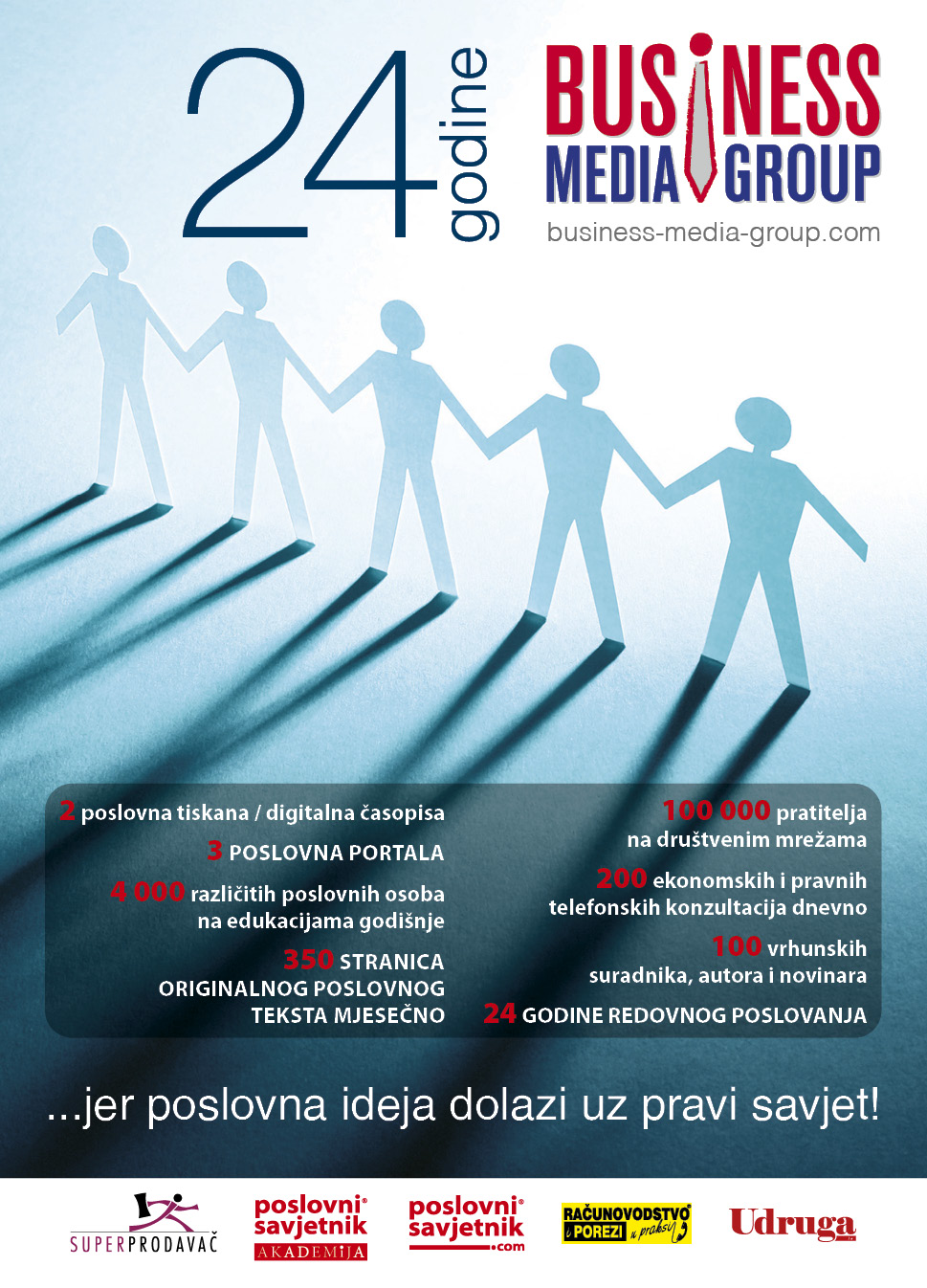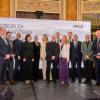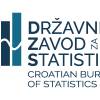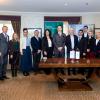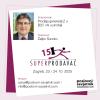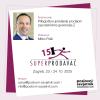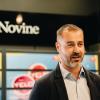
In just a few months the Covid-19 pandemic has transformed economies, organisations and communities around the world, infected millions and will tragically result in unpredictable numbers of deaths. It impacted every individual on the globe in many, but also in different ways.
Big or small, new or old, every business in America is witnessing a new reality, and a whole new set of unwritten workplace rules and unambiguous expectations. Any CEO who ignores this bottom-up revolution will suffer public backlash, recruitment and retention challenges, and fits internal turmoil. (Axios, 20-06-10)
The covid-19 pandemic made Leaders worry about massive revenue loss, human safety, prospects of bankruptcy, and offering sound, transparent, and ethical policies to employees.
Leaders and managers must react to disrupted supply chains, enable remote workforces, break bad news to employees and families, as well as maintain their own hope and energy so that they can continue to serve, guide, and move forward without any trusted roadmaps.
For many, there is a sense of brokenness.
But, there is one silver lining
It is in times of disruption that the best in human systems can burst forth.
Resilience, for example, CAN grow. Values CAN be lived, CAN come alive, instead of merely espoused. Moreover, while it may seem a luxury to talk about enterprise improvement, betterment, innovation, and positive organization development during a major dislodgment like this, that is exactly what leaders need to do.
To be sure, in the immediate or near term, resilience and bounce-back capacity is existentially crucial.
And for the long-term, we know this from years of research: corporate cultures are almost totally tested and forged in the crucible of crises, during the most challenging times of external adaptation and internal integration.
How leaders lead during times of catastrophe has an outsized effect on the future of things as corporate trust, collective confidence, resilience, and strong or elevating corporate culture.
Times of crisis almost always reveal or reinforce an institution’s “true colors”, and it can be a time of lasting set-back or exceptional co-elevation and unified achievement. (David Cooperrider, 20-04-22)
Already many discussions started about changes at high political levels, the EU e.g. invests 1,800 billion € in a Covid-19 recovery plan. (Charles Michel, President EU Council, 20-07-17) and in several EU countries decisions are made that were not possible 5 months ago. In the Netherlands working from home was appreciated by 70% of employees and 60% of companies that saved huge on fixed and variable costs and see a higher productivity. In politics the discussion is now to stop investing in new roads because working from home will be a new constant. Things are changing in many ways and changing fast because it is supported by a big majority of citizens.
Employee engagement
The U.S. employee engagement trend in 2020 so far shows that 37% of employees were engaged and 15% were actively disengaged. However in June, top covid-19 in the USA, the engagement dropped to 31%. (Gallup, 20-07-02)
A Gallup research mid 2019 showed that the global engagement was 33%, disengagement was 67%.
Now the important question is HOW actively engaged are your employees? Do you have any idea?
Customer engagement
In the USA banking sector 88% of the customers are engaged by their bank, 20% is not engaged and the bank has a big risk that they lose these customers. (Gallup, 16-11-10)
The important question is HOW engaged are your customers? Do you have any idea?
More than ever, post Covid-19, employee engagement and customer engagement will be the decisive factor for your personal success and for your company’s success.
Priority for every CEO, Leader and Manager must be to work on and improve the engagement of people, both your employees and your customers.
Your employees are the people who do the real work to create satisfied customers for your company by selling your products or for delivering perfect services.
If your people are not engaged, not motivated, not creative, then, as a CEO, Leader or manager, you and your company have a big problem.
I think you experienced yourself the difference between good service and bad service. You know it.
Make sure that your customers are engaged because your employees are highly engaged. There is your competitive advantage.
History also learns that moments like this offer us the opportunity for shifts, for positive change, big and small.
But openings do not last forever, and one way to keep such openings vital and expansive is to magnify meaningful stories through conversations with others.
What to do and how to do it?
In the literature you can see dozens of articles about “the pandemic’s lessons for leaders,” but there is little on the concrete tools, mindsets and change management methods for advancing collective resilience together.
And very little is written about how to advance deeply developmental trajectories together.
Not, about how to aim higher, for a better and more meaningful mission, and for a purposeful, common future together.
Great leaders communicate with their people, they exchange opinions and involve with their employees and customers in difficult times.
This ‘post covid-19’ period requires exchange, involvement and creativity.
HOW can you, as a CEO, as a (middle) manager or as an entrepreneur, take the most effective approach to build further upon your own strengths, the strengths of your employees and the strengths of your company?
How can you improve the engagement and involvement of your employees and customers?
How can you find answers to all the questions these turbulent and disruptive times created?
My simple answer is: Communication is key!! Communicate open and honest with your people.
Here is your play-book
My suggestion is to involve all or most of your employees in conversations with you and ask them for their experiences, their ideas and creativity.
Listen carefully to their opinions and suggestions, they work with and for your customers and know exactly how (un)satisfied they are, what your customers want and what they expect.
Of course you also give them your own ideas in an open exchange.
What you will gain are shared solutions, commitment from your people, higher engagement and motivation resulting in faster improvements more productivity and a higher quality.
And, the beautiful thing is, this works around the globe already, no matter in which sector you are.
How should Leaders / CEO’s talk with their people?
- Exchange in terms of what you are experiencing in the recent weeks, what is the most important thing stirring in you right now, and how do you sense it relates to our future, your most important hopes, or a broader sense of purpose?
- All around the world we are seeing people on the front lines of care in hospitals, in our communities, and in our businesses. Everywhere we look you can see individuals responding in courageous, caring and even unexpected ways.
If you would put the spotlight on just two of the most powerful stories you have seen or heard about – one in society outside your organisation and one inside your organisation, what would these stories be?
Consider examples that provide you with an image, inspiration or new understanding of what we as human beings are capable of together, what two stories or examples would you like to put the spotlight on?
- What in your view, at the highest level of your organisation, your country, and our world overall, what possibly good can come from this crisis, this tragedy, this moment of response?
Leadership is about making a difference.
Meg Wheatly defined Leadership as ‘leaving the world a better place than we found it, a leader is anyone who wants to make a positive difference at this time’.
And that is you, that is me, that is all of us who want to make a positive difference in our families, with our friends, in our faith communities, our volunteer networks, in our organisation and in our world. In all of this, what are you and we learning about Leadership?
Through the ups and downs of these times we all have reached down deep and we have been part of making a difference.
As you reflect on your own ups and downs, your high and low points, I invite you to share one of these moments where you worked alone or together with others to make a difference at this time.
It might have been at home with family, some contribution to your friends, neighbours, relatives or even to strangers. It might have been in your community or in your organisation or work.
Wherever it is from, please share one story of Leadership from your life during these times – where you were helping to make a difference at this time and why it is important for you.
Please share the story. What happened? Where? When? How did you feel? How did you overcome challenges? What can we learn together for ourselves and our organisation?
Now, from this story, without being humble, what does this story (and maybe other stories) say about you?
What are your three most important strengths? And how might you be able to leverage those qualities in your organisation? And how integrate them in your team conversations?
- . 2 . 3 .
The Continuity Question: What are those things we should keep?
Charles Darwin once said: “it’s not the strongest of the species that survive nor the most intelligent, but the ones most responsive to change”, especially in times of challenge and complexity, like ours.
Likewise, we know that our organisation, indeed every organisation in today’s world must change, evolve, and transform into the future.
But even in moments of volatility, tragedy and uncertainty like this, there are examples and signs of our organisation’s true colors, best values, or core strengths that we should keep.
Likewise, we know that our organisation must learn, change, evolve, and transform into the future, every organisation has to change in this constantly changing world. But resilient organisations - those able to bounce back - know how to preserve what they do best and they know how to boldly and bravely get better and change at the same time.
1 -Before moving to our hopes for our organisation’s future, I ask you the continuity question
If you could keep three of your greatest strengths, unique assets, or best qualities, where everything else can change, what, in your view, should we keep?
What three greatest strengths, assets, values, or historical qualities that you would hope and want us to maintain, to grow, and continue to value even as we move into a new and changing future?
And think about this as you keep your selection to three things: how will these strengths and values serve us now, to build resilience, and enable us to bounce back?
Please finish the following sentence: “The three things I really want our organization to keep and build upon no matter how much we change in a changing future include˝:
1 . 2 . 3 .
2 -Emerging New Strengths and Signs of Promising Possibility:
Now, as you look at your organization in this moment of the pandemic, dramatic challenges and uncertainty, there are the seeds of new strengths emerging, signs and examples of new potentials, progress, and new promises.
Think about one or two new emerging strengths or ways of working, signs of emerging potential and possibility that you believe show promise, not just for the moment but for the future too.
What one or two things are we beginning to do new and different now that you would want to spotlight and have us extend and, perhaps keep doing into the future?
1 . 2 .
Images of a Better Future: Visions of the Organization You Want in 2025
Let’s assume tonight you fall into a sound sleep…and it lasts for five years.
When you wake up, it is 2025. During those five years, your company has taken lots of lessons from times of challenge, especially the unprecedented disruption of the coronavirus pandemic and beyond.
Out of all of this, we actually became a much better organization. We produced small improvements. We also thought way out of the box and created several breakthrough changes and innovations.
With both the small changes and the more significant and braver breakthroughs, you love what you see.
In the five years, from 2020 to 2025, so many new opportunities, improvements, and good things came together that it’s like a miracle, and our organisation became a place that exceeded even your highest dreams and expectations.
So now it’s 2025, and you wake up.
- You are standing there seeing this company in the future, it is like the next chapter in a book.
- You see an organization that created new business opportunities and opportunities to serve customers, partners and communities.
- You see a more fully human organization with great relationships, collaboration, and high engagement.
- You get a tour of everything, from operations to customer experiences.
- You see the value your organization is creating both as a business and a business leader doing good and doing well in our community and the world.
- You see a unity of spirit and a stronger culture with values, leadership, and ways of working that you are proud of.
Now it’s time to describe what you see and why you like it.
What is happening in this vision of the future, which is new, different, or better?
And how do you know it?
What do you see in terms of people, business successes, customer success, innovations in services and technologies, or how the organization is designed and managed?
In your vision of this ideal future, how do your key stakeholders view your company?
- Please make notes on what you see. What is happening in 2025 that is changed, new, and better? And please complete this sentence:
“I will be most proud of our organization in 2025 when __________________________.˝ - Now with this future in mind, what is the smallest step we could take now or soon that might have the most significant impact in realizing elements of your desired future?
- What is one bigger, braver, and bolder thing we might consider, perhaps even an initiative we have never discussed much before?
- What is one bold thing that might propel us to new success, new contributions to building a better world, and to the future you want to see?
Now, interview and exchange with a colleague about his/her thoughts and ideas.
Let your people exchange with each other about their thoughts and ideas.
Following your interview with your partner, simply share back a few things you learned from them, key insights, or stories for which you feel grateful.
Then thank them in any way you want for a generous and powerful conversation.
If you potentially wish to get more information or if you have additional questions,
please feel free to e-mail me at johnlodder@gmail.com or call me at 091 1212 888
(ps/sm)

